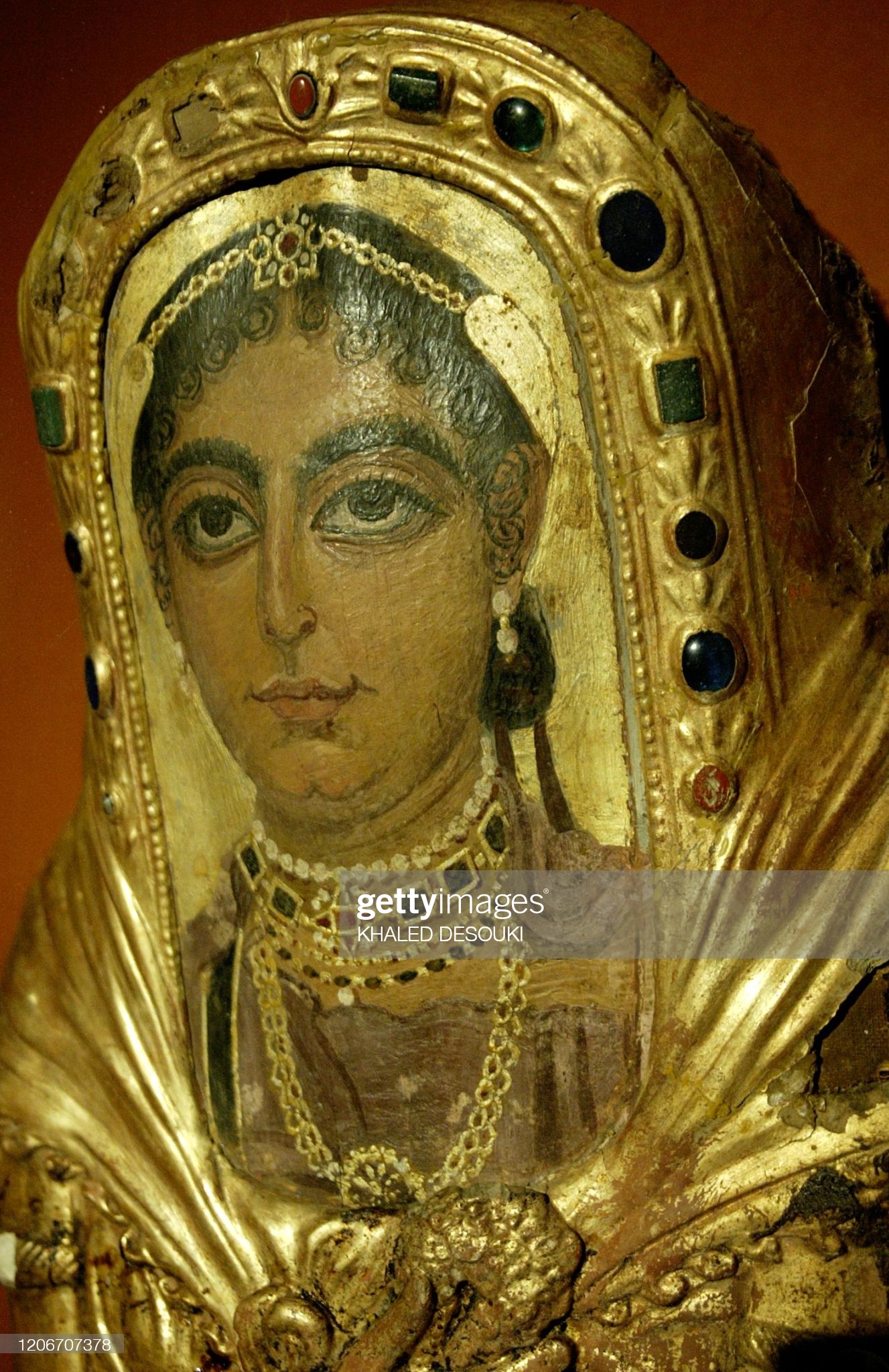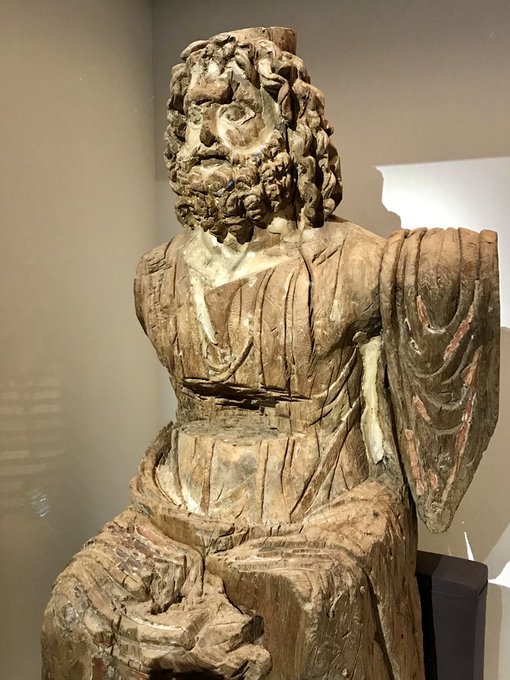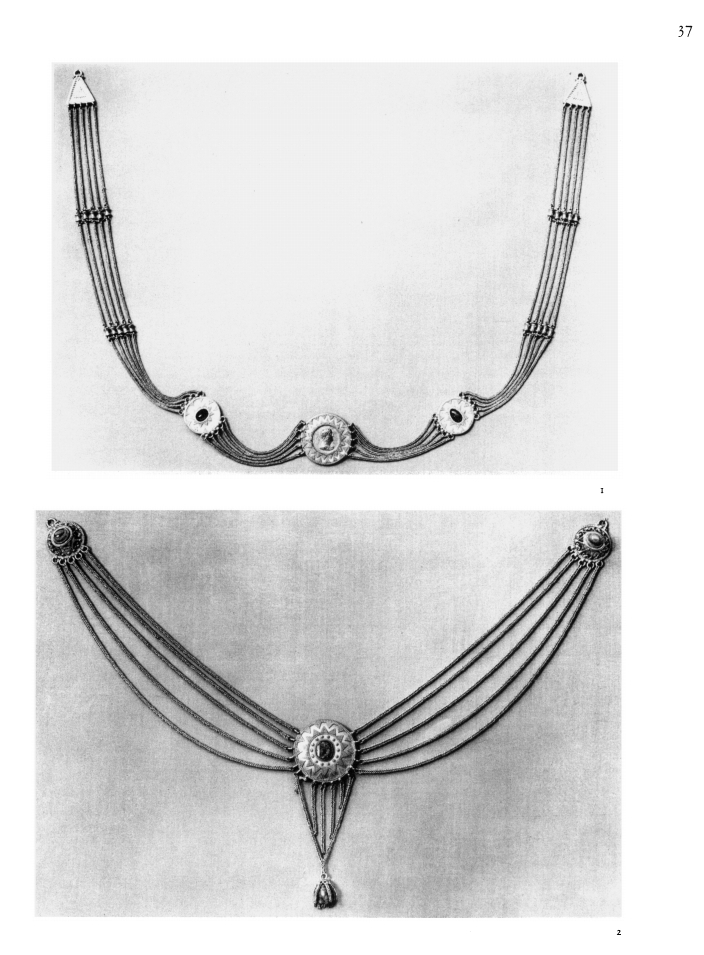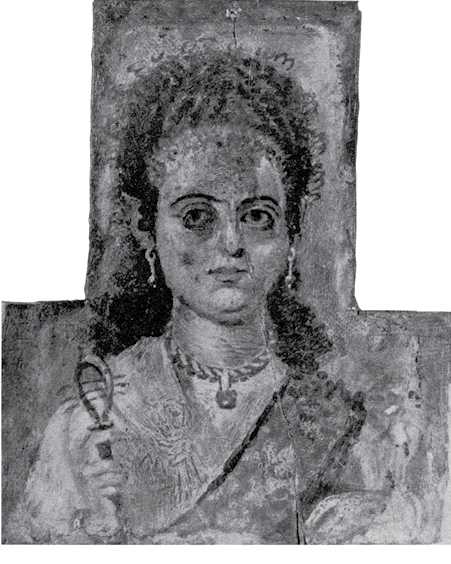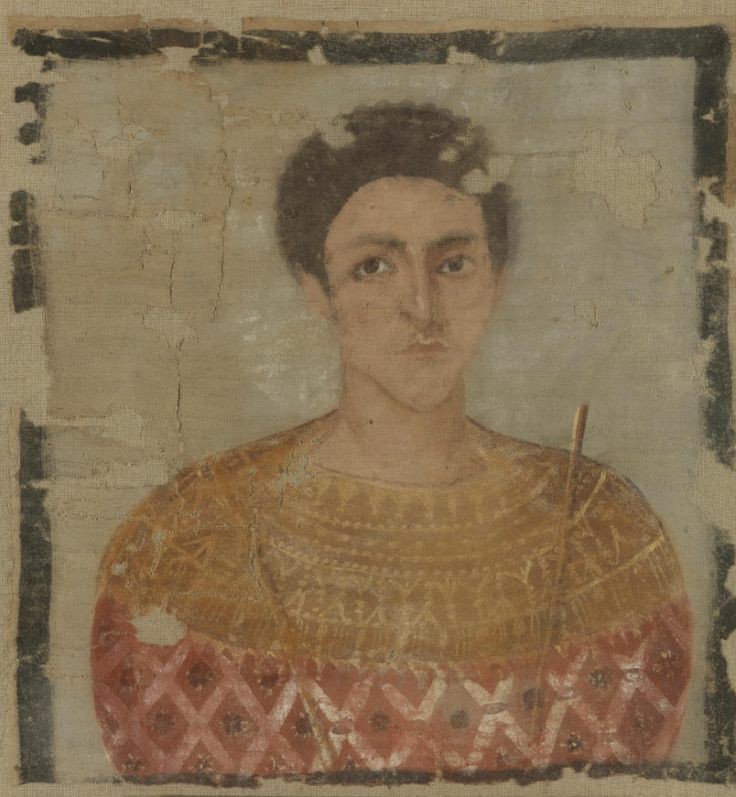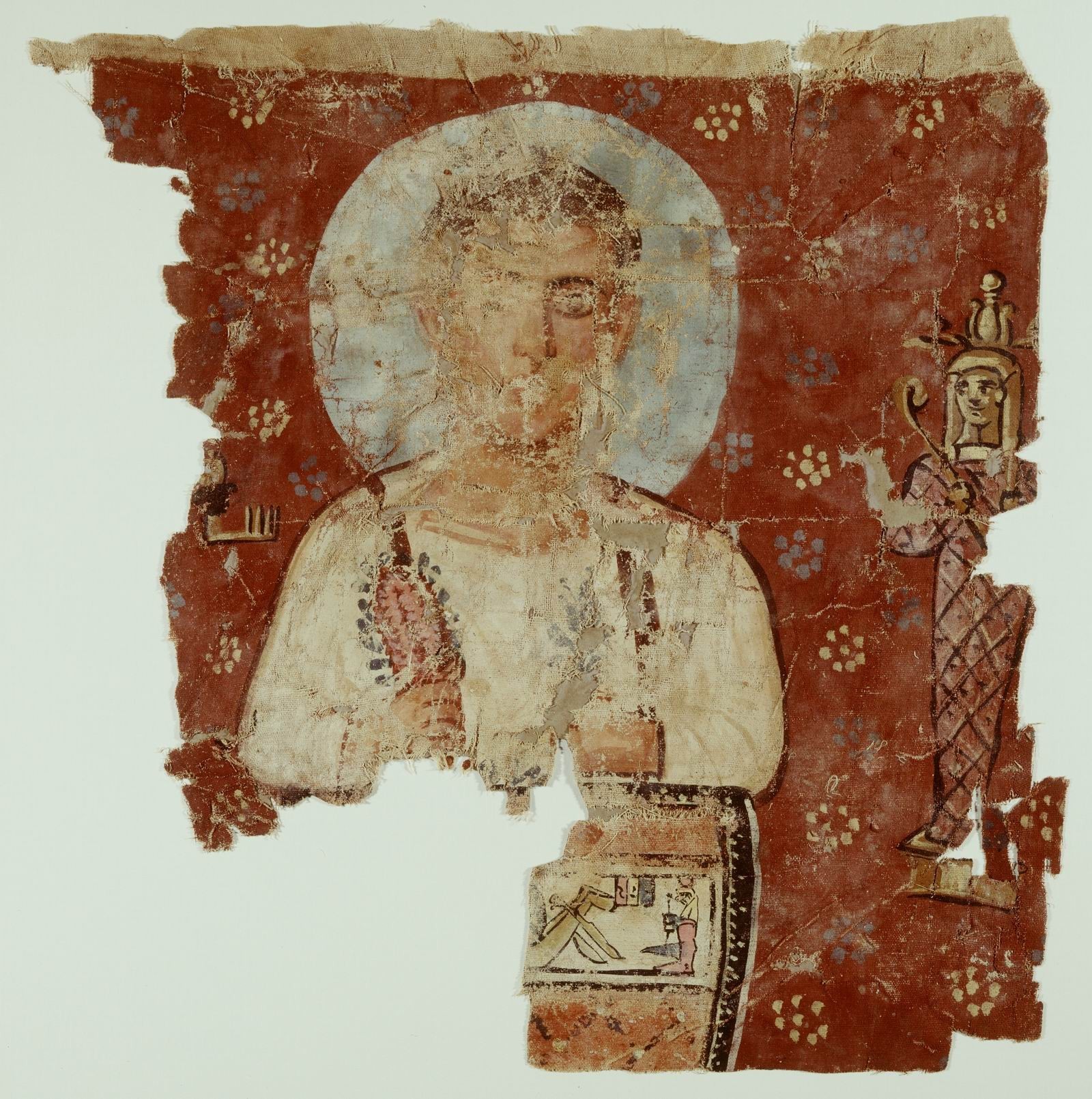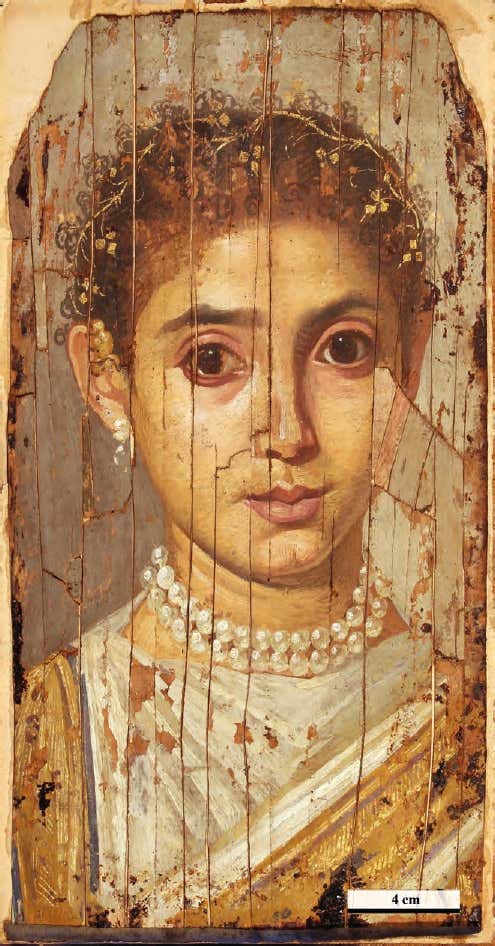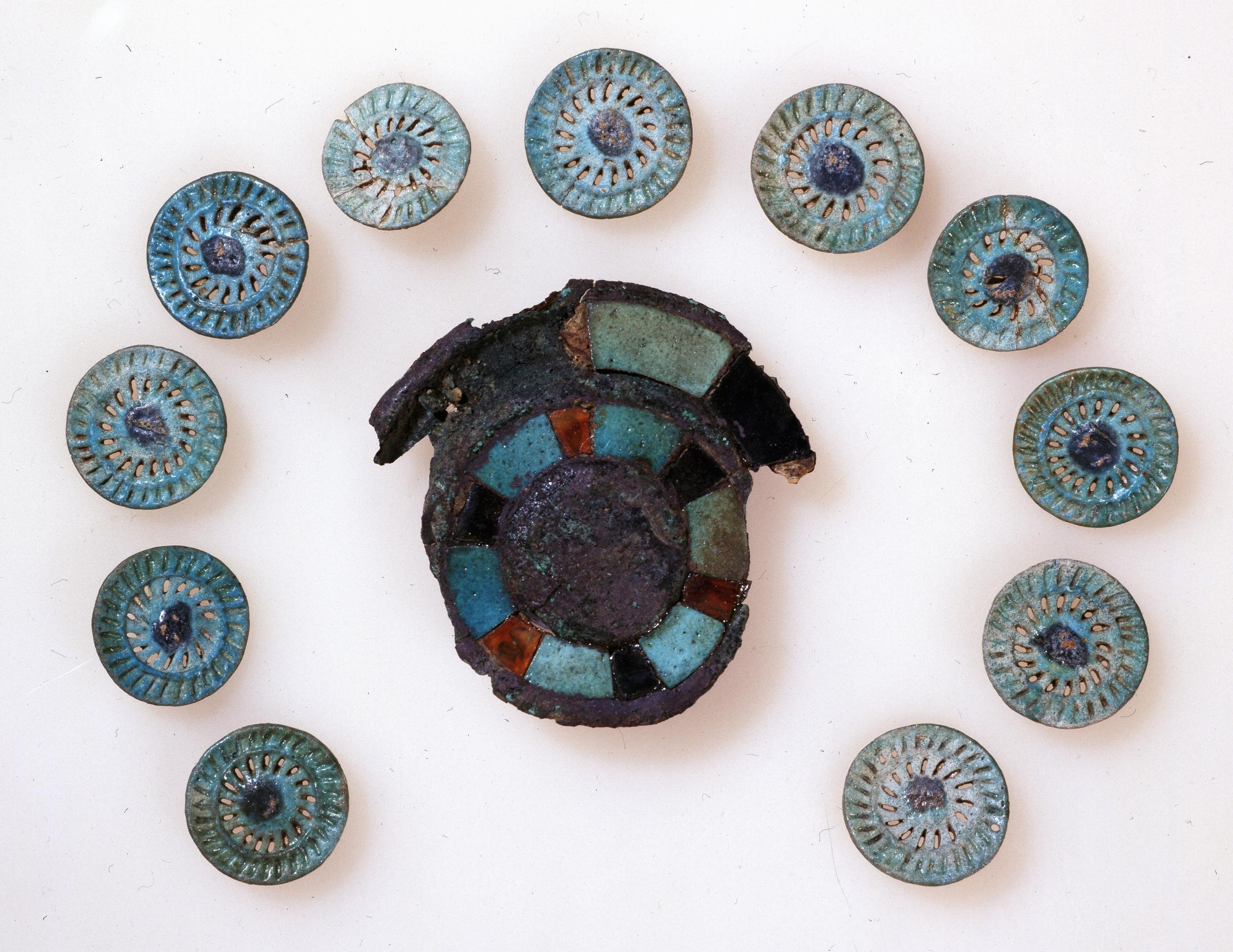Painted Coffin (sarcophagus) from Roman time Egypt; 300-400 C.E.
Wood, tempera on linen
The Getty Inv. no. 82.AP.75
From info card after Joan Ann Lansberry http://www.joanannlansberry.com/fotoart/getty/coffin.html
“A rare type of Romano-Egyptian funerary portrait survives on the front of this elaborately painted wooden coffin. The deceased reclines in comfort, attended by servants who provide him with food, cool air from a fan, and texts for reading. His name, Ammonios, is written on the scroll held in his hands. The attendants are depicted in smaller scale than Ammonios, indicating their inferior social position. Similar banquet scenes are commonly found in Greek funerary art. The expressive rendering of the young man’s face, however, is related to the tradition of painted mummy portraits (many of which can be seen in this room), and the style of painting is typical of Egyptian tomb decoration.”
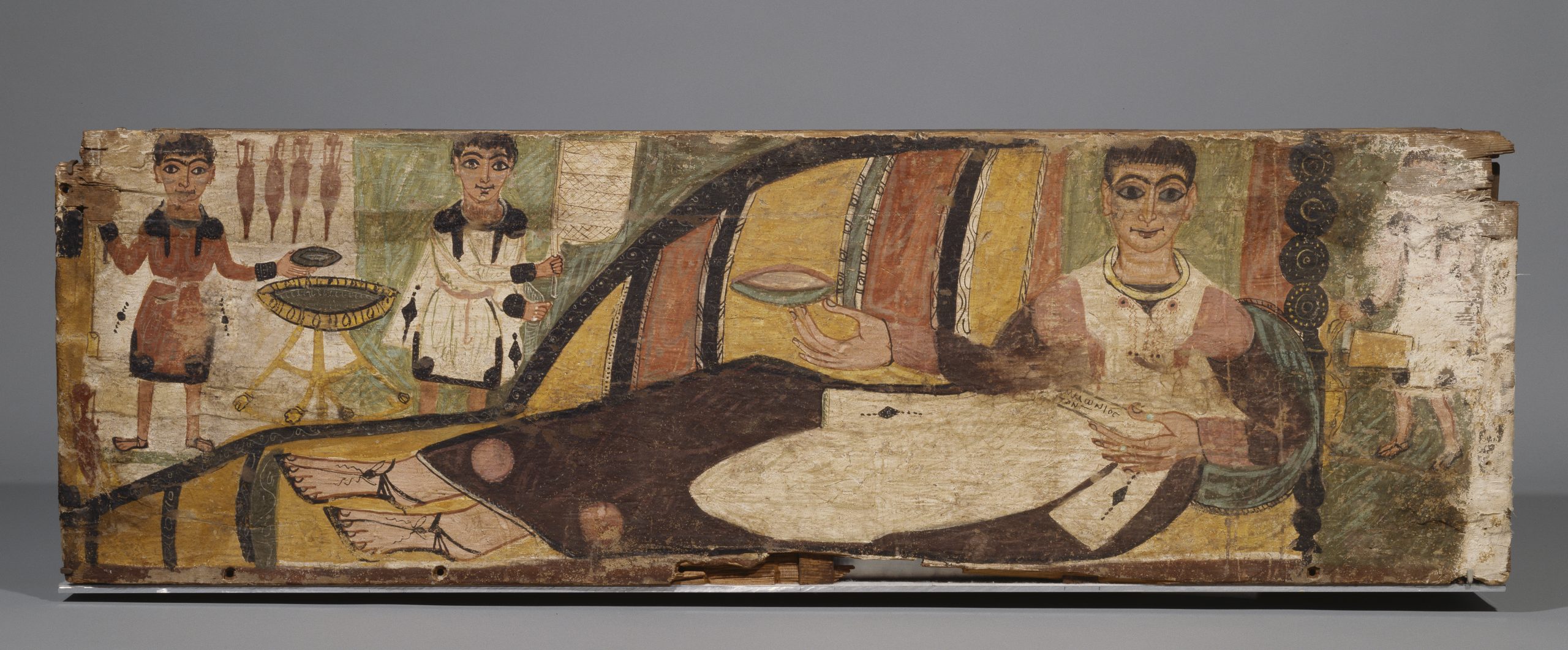
SOURCES:
Parlasca, Klaus “Ein spaetroemischer bemalter Sarg aus Aegypten im J. Paul Getty Museum,” Alexandria and Alexandrianism, pp. 155-169. Malibu: 1996, figs. 1a-f; p. 168, n. 2 for additional bibliography.
Elston, Maya, and Jeffrey Maish “Technical Investigations of a Painted Romano-Egyptian Sarcophagus from the Fourth Century A.D.,” Studia Varia from the J. Paul Getty Museum 2. Occasional Papers on Antiquities 10 (2001), pp. 153-166, figs. 1a-b, 3a-c, 5a-q.
“The two better-preserved attendant figures on the sarcophagus are dressed in short tunics, one white, the other dark pink, both accentuated with dark cuffs, hems, and collars. The reclining figure is more resplendent in a long robe and yellow-colored necklace. He wears a light-colored tunic with a dark brown garment underneath decorated with two red circles near the lower hem. The sleeves, which are darker as well, must belong to the dark brown robe.6 His face is painted in the tradition similar to Fayum tempera portraits (fig. 3 a). The unusually dark tonality of his sclera (white of the eyes) is due to alteration of the white lead pigment that was applied to accentuate that area.
Similar color changes occurred elsewhere, where the same pigment was used to delineate ornaments.
The scroll in the reclining youth’s hand is inscribed “[Amm]onios,” suggesting that this was the name of the deceased. (…)
The general impression on the front panel is that the painting represents a room interior (see fig. ib). The bed or couch is painted in large bands of dark pink, ocher, and green, which are further embellished with decorative elements. An area behind the bed is painted half in white, half in green.”
Mentioned in the article on Coptic textiles: Les textiles coptes : problématiques, inspirations et polysémie Arnaud Quertinmont academia.edu

